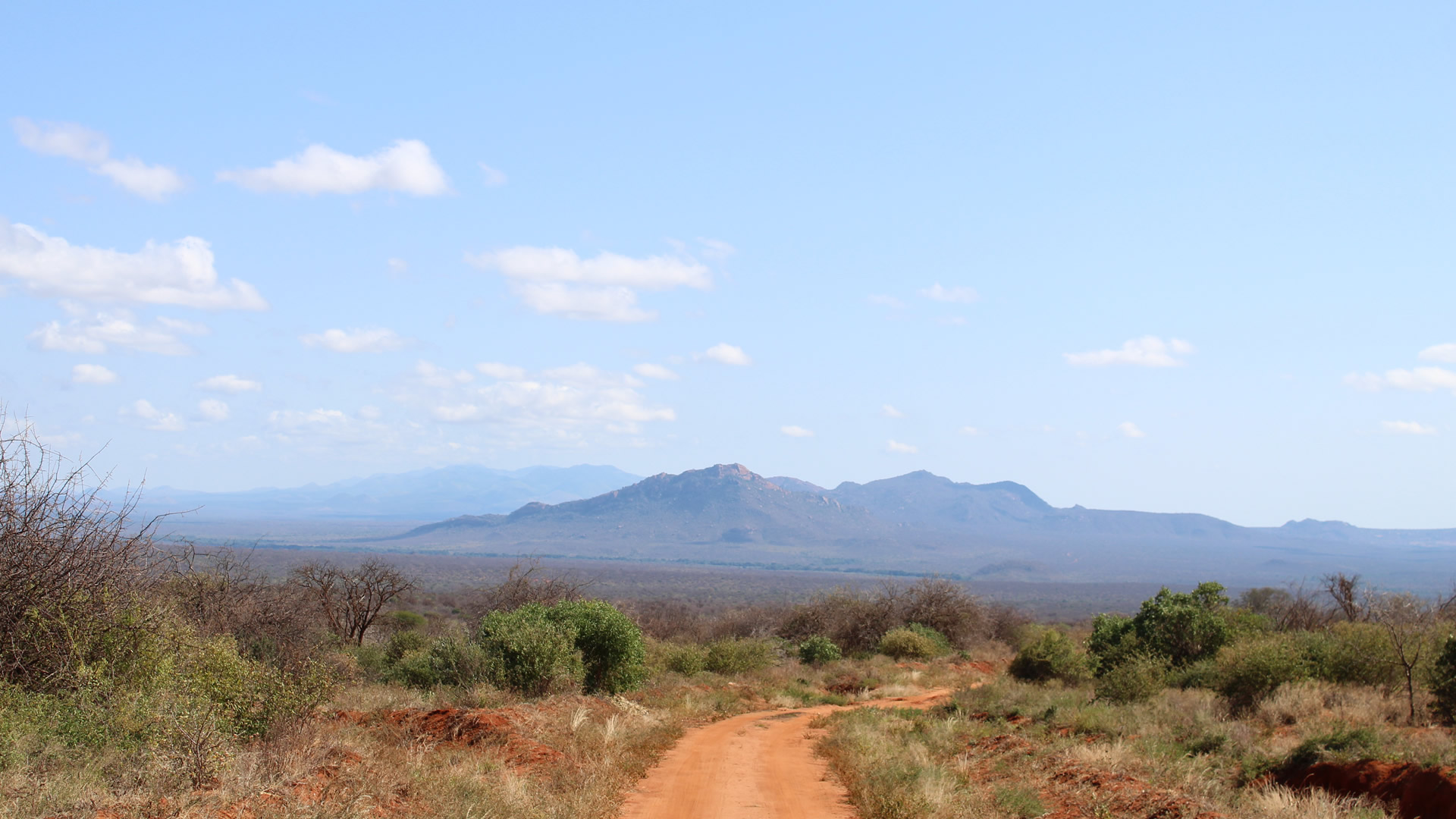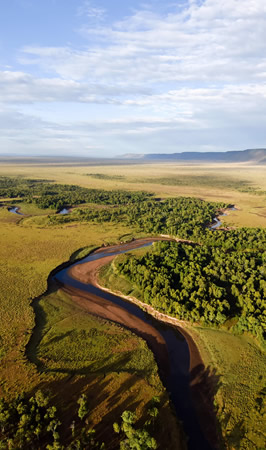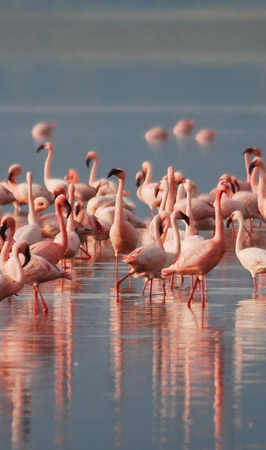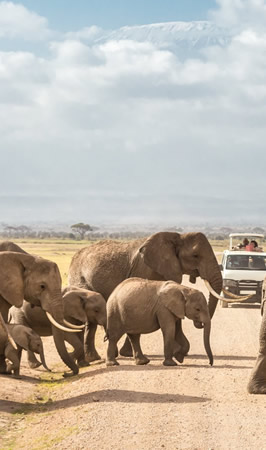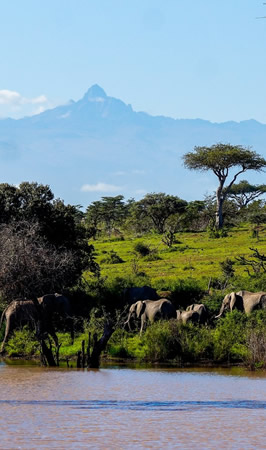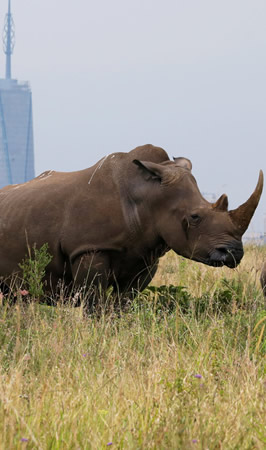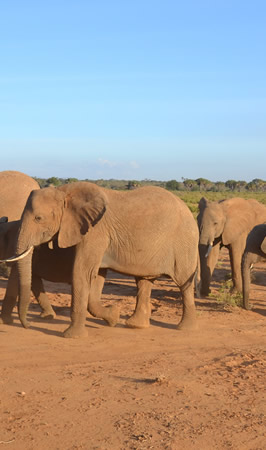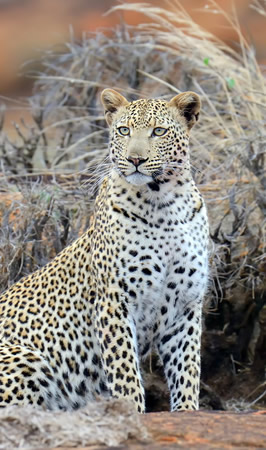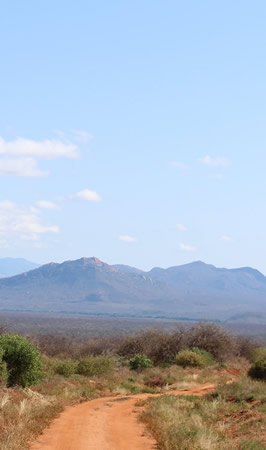Experience Tsavo West National Park
Wildlife Highlights
Tsavo West is a real wilderness destination. All of the Big Five are present, but wildlife densities are lower than in some of the more popular parks in Kenya. However, there is a good variety of animals with many dry-country specials, including the shy lesser kudu and the rare fringe-eared oryx. Large elephant herds can be found gathering at the waterholes.
The park is one of the best places to see the skittish lesser kudu. The rocky terrain is also a good habitat to look for klipspringers, often found in pairs. Antelope that thrive in arid conditions can also be found here, including the very localized fringe-eared oryx and gerenuk. The drive-through rhino sanctuary increases your chances of spotting the elusive black rhino.
Excellent Birding
Tsavo West’s prolific birdlife features over 400-recorded species. Ngulia Hills, one of the landmarks in the park, is situated along one of the world’s busiest avian migration routes. Bird ringers make an annual pilgrimage here between October and January. Ngulia is the site of Africa’s foremost bird-ringing (tagging to enable individual bird identification) project. More than 100 migrant and resident species have been ringed here – the most prolific being marsh warbler, river warbler, red-backed shrike, thrush nightingale and common whitethroat.
Tsavo West National Park offers great bird watching in all seasons. Many of the more unusual specials are resident and can be spotted any time. Migratory birds, a real feature of the birding in the park, fill the trees, waterways and skies from November to April. Peak migration months are October and November. November and April are peak months for rainfall – good to keep in mind if birding is your primary interest here.
Tsavo West National Park habitat includes open plains and savannah bush, semi-desert scrub, acacia woodlands, numerous rocky ridges and outcrops and swathes of riverine vegetation. Toward the Chyulu Hills, the landscape is of recent volcanic origin with some spectacular lava flows.
Scenery
Tsavo West has a rugged, arid landscape. In contrast with the flat plains of Tsavo East, Tsavo West is marked by a number of rocky outcrops and volcanic hills. Shetani lava flows, just outside the park, make for a great excursion. On a fine day, the park offers lovely views of the snow-capped peaks of Mount Kilimanjaro. Tsavo West National Park landscape is dominated by giant baobabs reputed to live a thousand years. After the rain, Tsavo West National Park is showered with white and pink ipomea and acacia trees of white and pink blossom. The desert rose, somewhat like a miniature baobab, has pink flowers of striking beauty at almost any time of the year.
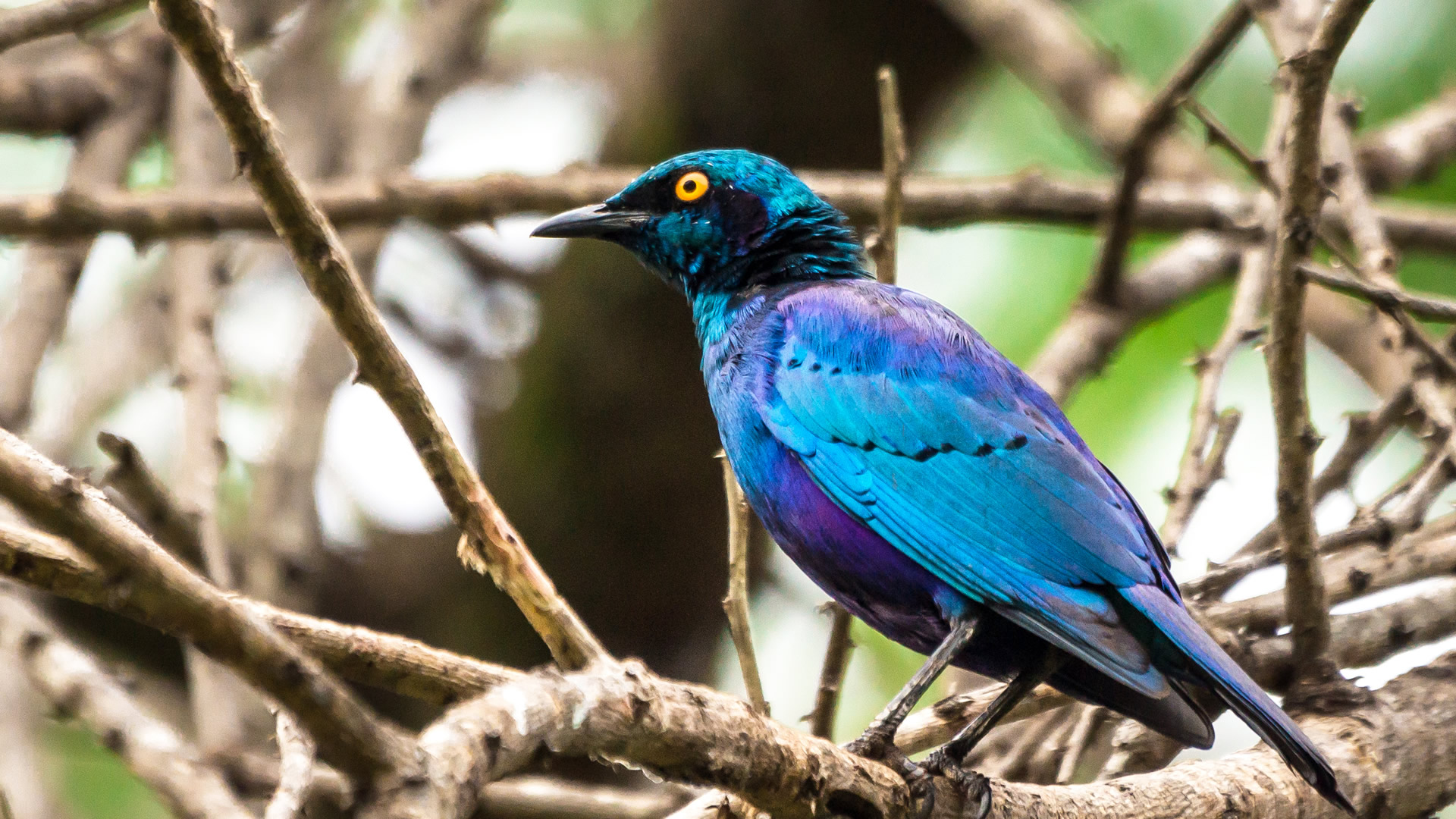 Birding at the Tsavo West National Park
Birding at the Tsavo West National Park
